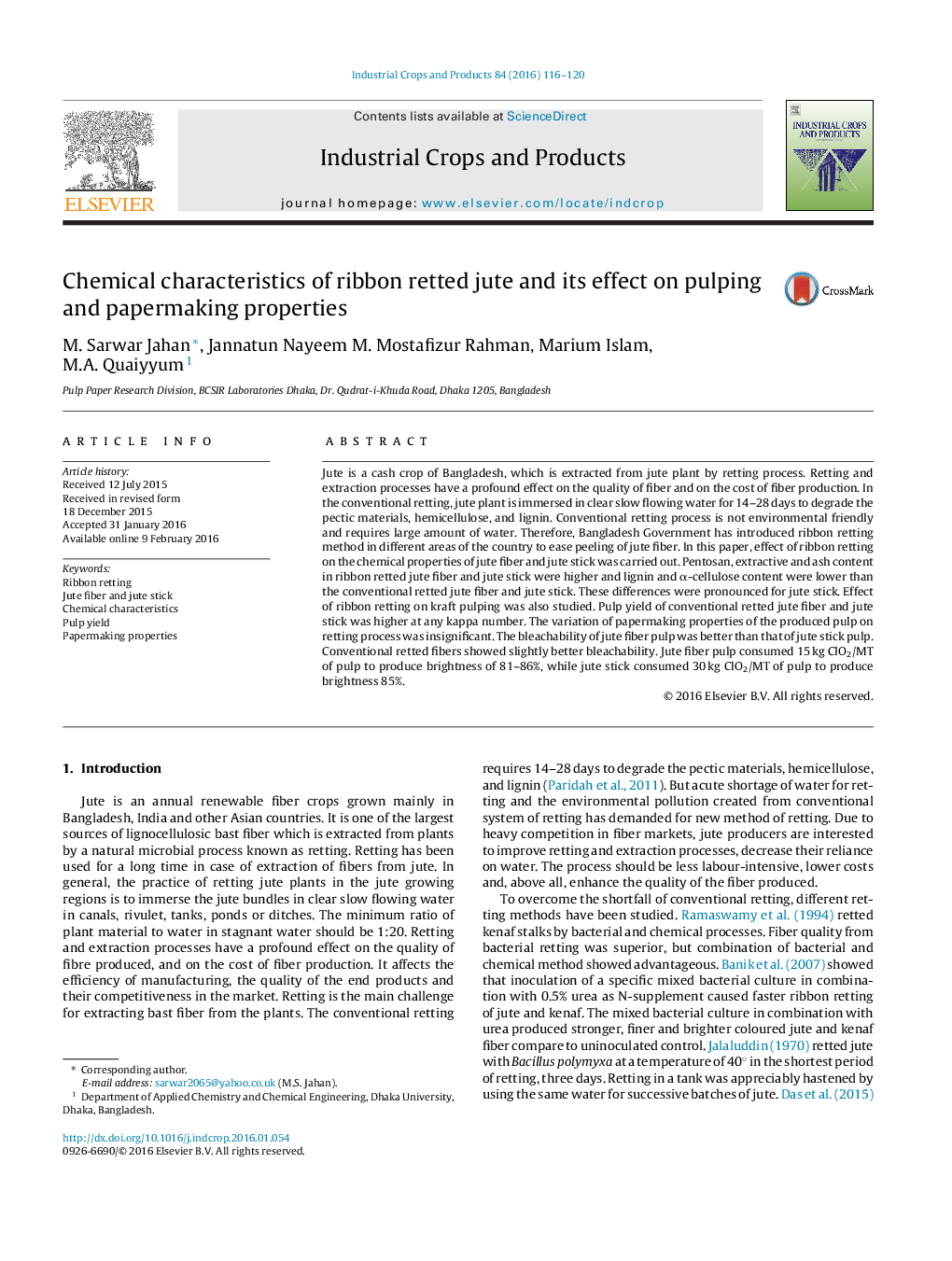| کد مقاله | کد نشریه | سال انتشار | مقاله انگلیسی | نسخه تمام متن |
|---|---|---|---|---|
| 4512395 | 1624826 | 2016 | 5 صفحه PDF | دانلود رایگان |
• Chemical characteristics of ribbon and convention retted jute fiber and stick were determined.
• Ribbon retted fibre and stick had high extractive and hemicelluloses content.
• Conventional retted fibre and stick had higher pulp yield and lower kappa number.
• Conventional fibre and stick pulps showed better bleachability.
• Fibre and stick from both retting processes are suitable for papermaking pulp.
Jute is a cash crop of Bangladesh, which is extracted from jute plant by retting process. Retting and extraction processes have a profound effect on the quality of fiber and on the cost of fiber production. In the conventional retting, jute plant is immersed in clear slow flowing water for 14–28 days to degrade the pectic materials, hemicellulose, and lignin. Conventional retting process is not environmental friendly and requires large amount of water. Therefore, Bangladesh Government has introduced ribbon retting method in different areas of the country to ease peeling of jute fiber. In this paper, effect of ribbon retting on the chemical properties of jute fiber and jute stick was carried out. Pentosan, extractive and ash content in ribbon retted jute fiber and jute stick were higher and lignin and α-cellulose content were lower than the conventional retted jute fiber and jute stick. These differences were pronounced for jute stick. Effect of ribbon retting on kraft pulping was also studied. Pulp yield of conventional retted jute fiber and jute stick was higher at any kappa number. The variation of papermaking properties of the produced pulp on retting process was insignificant. The bleachability of jute fiber pulp was better than that of jute stick pulp. Conventional retted fibers showed slightly better bleachability. Jute fiber pulp consumed 15 kg ClO2/MT of pulp to produce brightness of 81–86%, while jute stick consumed 30 kg ClO2/MT of pulp to produce brightness 85%.
Journal: Industrial Crops and Products - Volume 84, June 2016, Pages 116–120
